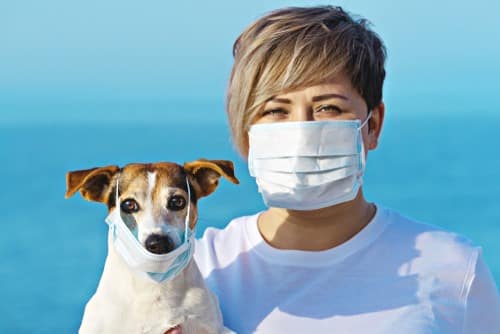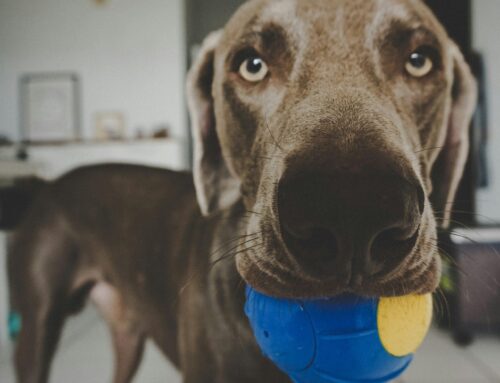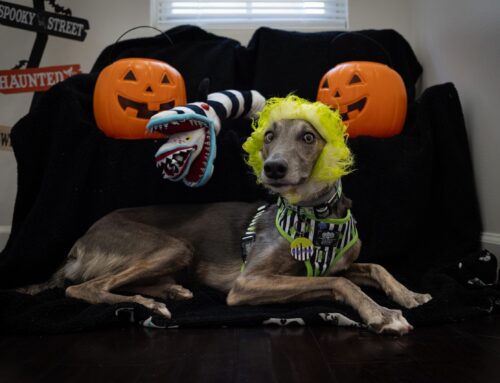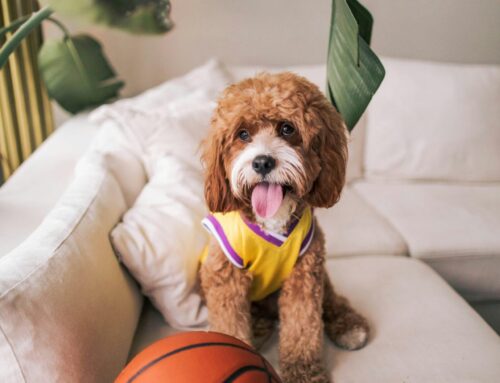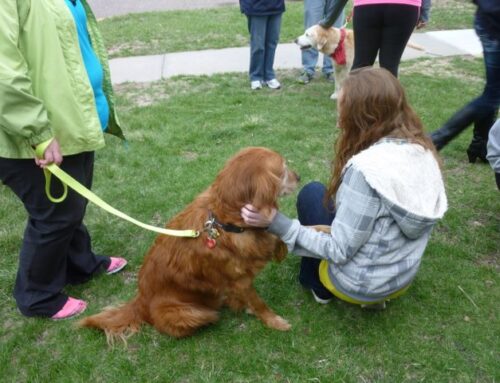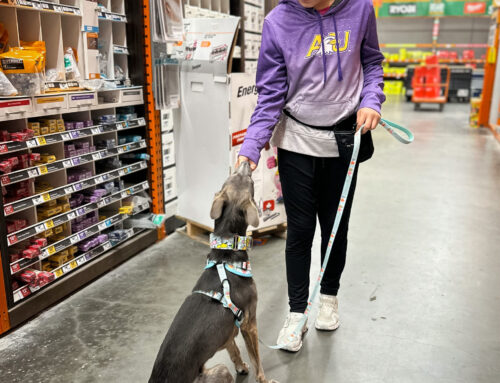Part I: Desensitizing your dog to COVID-related stimuli
This educational series offered by ATD and taught by ATD board member Laurie Schlossnagle, KPA CTP, CCUI, PCT-A, CBCC-KA, CPDT-KA, TAG teacher Level 1 is intended to support handlers and their dogs as they prepare to resume in-person visits after a prolonged suspension due to the COVID-19 pandemic. COVID-19 has changed the way therapy dogs share smiles and joy with the public, with many handlers choosing to do window visits, online visits, or sharing life-size cutouts of their dogs with the facilities they would normally visit in person. If you prefer to watch these sessions, you can find them on our YouTube channel.
How to train?
Most dogs respond quickly and favorably to the use of food. Using food during desensitization training helps your dog reframe potentially scary, unsure, or negative associations, retraining your dog’s brain to see the “scary” stimulus, like a mask, and associate it instead with a tasty snack. If when presented with the stimulus (like a mask), your dog responds favorably (not barking, jumping, etc.), give the treat. If your dog isn’t food motivated, use what they most enjoy for reward – may be a tug on a rope, a chest scratch, or a brief play session with their favorite toy.
When to train?
If your dog is food-motivated, the best time to train him is at mealtimes. When you select mealtimes for training, your dog is hungry and motivated and you can use your dog’s regular food for training, helping to ensure your dog doesn’t put on extra weight. Additionally, when you choose to train at mealtime, you remember to do it regularly and the training doesn’t consume much additional time. If an item is particularly “scary” or off-putting for your dog, dog food may not be enough incentive for them. Try using higher-value food, usually treats that are soft and stinky, like tiny bits of cheese, hotdogs or liver while asking your dog to tolerate the particularly scary item.
What to present?
Many handlers have been staying home, doing their part to try to end the spread of COVID-19, so let’s talk about the variety of personal protective equipment you and your dog may encounter on a visit to a school or medical facility.
Masks – There are so many different kinds of masks people are using with a variety of effects. N-95 masks can make people sound scary and smell like medical equipment. Cloth masks can move a lot when people talk, looking scary to your dog. Some cloth masks have crazy prints on them, including large strange-looking human mouths or even dog or cat faces. As best you can, vary what your dog sees and what you train. If the facility you’ll visit requires or provides a particular type of mask, ask if you can get one or two masks to train your dog to that mask.
Start by showing your dog the mask held in your hand and let him sniff it. Give a treat. Do this until the dog does not react to the mask or reacts positively with a tail wag. Next, put the mask on your face and lure your dog’s gaze to the mask by putting a treat in front of his nose, then drawing the treat to your face near the mask. When your dog looks at your masked face and does not react negatively, treat your dog. Make sure you talk wearing the mask so the dog can hear how different your voice will sound on the visit and use a fun, upbeat tone to communicate to your dog that you’re happy and the mask means good things will happen!
Hand sanitizer – Your dog may encounter a variety of hand sanitizers with different ingredients, different smells, different consistencies, and from different dispensers. Prepare your dog for as many different possibilities as you can, starting at home and expanding your training to sanitizing stations in public areas (parks, home improvement stores, etc.)
If your dog likes to lick sanitizer from hands, present your sanitized hand and only treat your dog when he chooses NOT to lick. Start with a small bit of hand sanitizer on one hand, show your hand to your dog (not too close, you want to be able to pull it away if he goes to lick it), and if he doesn’t lick your hand, then give him a treat. If he tries to lick your hand, remove your hand quickly before he can make contact. You don’t need to scold him – your hand moving away, and the absence of a treat will be clear enough. In fact, scolding may have the opposite effect and can cause your dog to shy away from or be afraid of hands with sanitizer on them. Wait a few seconds and try again. Be sure to reinforce with food when he controls his licker and chooses not to kiss! If even a small amount of hand sanitizer is too tempting for your dog, present the hand a few times without anything on it to get a nice rhythm going. Once you can offer a “plain” hand to your dog with no licking (don’t forget to reinforce this good behavior), then it’s time to try again with a small amount of hand sanitizer. Over several training sessions, progress to having more sanitizer on your hand while continuing to reinforce your dog for not licking.
Face shields – If you and your dog will visit a hospital or airport, you will very likely encounter people wearing face shields, sometimes in addition to a mask. Positively reinforce the face shield just like the mask. Make sure you train the face shield with and without a mask. If you don’t have access to a face shield, you can use a clear, plastic page protector (like you get from an office supply store) that you place on your forehead and secure with a headband or shoestring. The important thing is that your dog becomes accustomed to seeing people with plastic barriers in front of their faces!
Gloves – Dogs will encounter gloves a lot this year. Ideally, people petting your dog will remove their gloves to pet with clean hands, then wash/sanitize and re-glove. Remember, gloves are only effective when they’re changed between interactions to avoid spreading diseases from person to person. Positively reinforce gloves the same way you reinforce the presence of face shields and masks. Rub the gloves together in case they make noise. Pet your dog with the glove on as well as immediately after removing the glove as your hand will smell and feel different each time. Again, ask your facility for a pair of gloves to train your dog, or vary what your dog sees, smells, and feels as best you can.
Gowns and booties – In hospital settings, dogs will see people in surgical gowns and booties. The paper gowns can make odd rustling noises, so you can use wrapping paper or packing paper for desensitizing dogs to this material. Walk your dog across the paper or toss treats on the paper if he is unwilling to walk on it. Hold the paper up with one hand and treat next to the paper so your dog brings his head close to it.
When to start?
Be proactive! The time to train and prepare for in-person visits is now. Many of these protective devices will be with us for some time, so getting your dog used to seeing them is a good idea. Furthermore, training your dog like this reinforces the wonderful bond you and your dog have and engages his brain, keeping him entertained and thinking. Happy training and thank you for being part of the ATD family!

